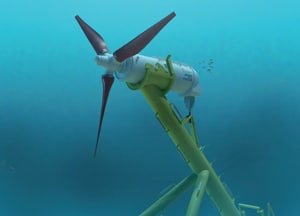
Tidal Power
Using Tidal Power as an Ocean Energy Resource
![]() Tidal Power, also known as tidal energy, is an ocean-based technology with the high potential of harnessing the power of ocean tides to provide us with clean and free energy for the future. Typically, tidal power involves leveraging the kinetic energy stored in the movement of the incoming and outgoing tides, as well as the daily differences between the high tide and the low tide at a given location.
Tidal Power, also known as tidal energy, is an ocean-based technology with the high potential of harnessing the power of ocean tides to provide us with clean and free energy for the future. Typically, tidal power involves leveraging the kinetic energy stored in the movement of the incoming and outgoing tides, as well as the daily differences between the high tide and the low tide at a given location.
Harnessing tidal energy, one of the oldest methods involves building a tidal barrage or dam across a suitable bay or estuary that has large differences in elevation between high and low tides. Today, many tidal power plants exist worldwide, using tidal barrages, dams, oscillating hydrofoils, tidal turbines, and tidal kites for small scale electricity generation within the shallow and deeper waters around different coastal areas.
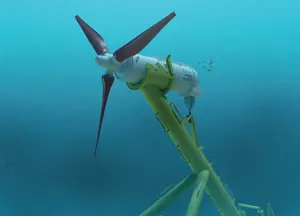
There are many different types and varieties of renewable energy systems, but tidal power, being an ocean-based technology, is one of the few sustainable sources that can be accurately predicted over many years. The ebb and flow of the tides, or tidal energy, rely on the tidal forces exerted by the gravitational movement of the sun and moon.
Since the movement of the tides, the primary source of tidal energy, around a coastline does not occur at the same time, but is staggered around the coast, full tidal power generation will be available at one tidal location when there is no tidal power available at another location around the coastline, thus allowing power generation from multiple locations over a period of time.
As a marine renewable technology, tidal power plants or generating machines can be located underwater and beneath the waves in under-utilised locations. This gives a significant advantage over other marine-based systems as the tidal turbines cannot be seen, unlike offshore wind farms or wave energy devices.
Tidal Power Devices
There are many different types of tidal energy technologies and machine designs used around the world, but there are basically two methods of generating electricity from the movement of the tides, making up the core of tidal energy systems:
- Tidal Range Devices: these take advantage of the potential energy stored between the high and low tide levels, a fundamental principle of tidal energy.
- Tidal Stream Devices: these harness the kinetic energy of tidal flow in tidal currents, a form of tidal energy, to generate electricity.
A Tidal range device, a key component of tidal energy systems, leverages the vertical difference in the water level between a high tide and a low tide. This is achieved by trapping sea water within a tidal lagoon or a flooded basin behind a large tidal barrage. The water is then released back to the sea via turbines. By manipulating sluice gates, sea water is allowed to enter the basin or estuary before being trapped on one side, creating a static head of water across it due to the cyclic movement of the tides.
When the head of sea water is sufficiently large, the sluice gates are re-opened, allowing the impounded water to flow back to the sea. This process, a key part of a tidal power plant, uses the force of gravity across horizontal axis turbine blades for electricity generation. By strategically designing the turbine enclosure, the sea water can be concentrated and accelerated over the turbines blades, thereby increasing the efficiency of generation.
We can deploy tidal range devices in various tidal power plant schemes for electrical generation such as: flood generation, ebb generation and two-way electrical energy generation. The choice of scheme depends on the strength of the tide and water requirements.
Tidal Stream Devices
Tidal stream devices a form of tidal generator, are typically designed for deep water operation where it’s too deep to mount tidal turbines directly to the seabed. These tidal technologies use large turbines to extract the tidal energy from the sea, operating in a manner similar to wind turbines. Like their wind turbine counterparts, tidal turbines use axial shaped turbine blades that operate according to the principles of aerodynamic lift.
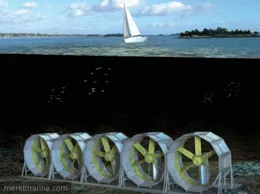
As the dense seawater flows over the turbine blades, it generates a rotational force that turns the blades, producing electricity. This process, a key aspect of harnessing tidal energy, compensates for the slower velocity of tidal currents compared to wind, allowing tidal stream devices to generate similar levels of electrical energy to conventional three-bladed wind turbines.
Also, unlike wind power, tidal energy systems do not experience sudden or extreme changes in the speed of underwater tidal currents that could potentially damage the tidal stream devices. Additionally, storms or severe weather conditions above the surface cannot damage the tidal stream devices or force them to shut down.
Although tidal energy devices like tidal stream turbines do not have significant impacts on water levels, unlike tidal fence devices with their dams and tidal barrages, they can impact on the surrounding water quality. This is due to the reduction in both the upstream and downstream tidal current velocities caused by the extraction of energy, which allows for sediment concentrations to build up.
This could affect both the erosion and deposition of the sea bed a considerable distance away from the location of the tidal energy array. Also, large rotating marine energy devices such as tidal turbines can have many other unseen impacts on the surrounding environment. These include underwater noise pollution, the generation of electromagnetic fields around the generators and electrical cables, as well as the striking of fish and marine animals by the turbines rotor blades or other moving parts.
Oscillating Tidal Energy Devices
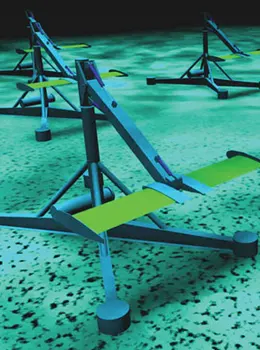
Oscillating hydrofoil devices, a type of tidal energy technology, extract energy from the tidal current in a similar manner to a rotating tidal turbine but oscillate in an up and down motion. An oscillating hydrofoil developed by the University of Strathclyde, consists of a large hydrofoil wing attached to a long lever arm that is allowed to move up and down.
Due to its wing-like shape, as the tidal energy current flows over the hydrofoil wing, it generates a vertical lift which causes the attached lever to move upwards. At the peak of the movement, the hydrofoil’s angle of attack relative to the approaching tidal currents changes, so that now the lift is being generated on the underside of the hydrofoil wing.
This reverses the direction of motion, forcing the wing downwards until moving water over the wing causes it to reverse direction, and the up-down movement continues once again. Thus, the total swept area for a tidal energy device like an oscillating hydrofoil wing will be its vertical up-down distance by its wingspan.
The resulting up-down oscillations of the hydrofoil wing is used to drive a high pressure hydraulic pump which in turn drives an electrical generator. Clearly, the advantage of the tidal energy device like the oscillating hydrofoil wing is that the single blade can be of a much simpler design than those of a rotating axial turbine. This is because the speed of the flow of the seawater over it, and therefore the turbine blades angle of attack, is the same along its entire length and is not twisted like the axial turbine blade design.
Tidal Kite Devices

Tidal Kite Devices, another form of tidal energy technology, work in the same way as a conventional kite, but underwater. A tidal kite consists of a hydrofoil wing tethered to the seabed and which is allowed to “fly” or glide along in the oceans tidal currents.
The flow of tidal energy in the form of currents over the hydrofoil shaped wing generates a lifting force. This force propels the kite forwards through the moving water, mirroring the way a conventional kite moves through the air.
By combining tension in the kite’s tether with the use of a suitable rudder for aligning with the current, the tidal energy kite’s direction can be controlled. It can be made to fly along a predetermined trajectory through the water. The mechanical energy of a small turbine attached to the kite is harnessed to drive a generator, producing electrical energy as the kite navigates the seawater.
A notable concern with tidal energy is what happens to power generation when the tidal currents cease during the turn of the tides. Does the tidal power kite sink to the seabed? The answer is no. Thanks to the hydrofoil wing’s neutral or slight positive buoyancy, it always seeks to float and fly through the seawater, even in the absence of tidal currents to exploit..
Other tidal power development devices that harness tidal energy include those resembling underwater aeroplanes. These have two counter-rotating turbines connected to electrical generators, symmetrically positioned on either side of a fuselage-shaped body. The advantage of these types of tidal power technologies is their cost-effectiveness, ease of maintenance, relatively low environmental impact, and versatility, as they can be installed in almost any sea or river.



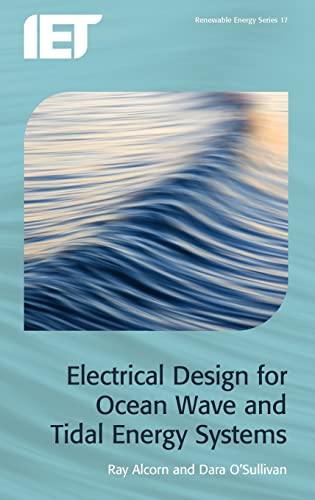


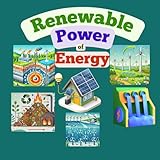



Carnegie clean energy has for the past few years been supplying energy together with potable water to the island of Reunion and the Australian naval base on Garden Island using an array of large submersible bouys anchored to the sea floor. These oscillate with the tidal flow being sited below tidal depth due to the effect of gravitational pull of the moon, and the swaying motion pump sea-water to the shore at upto 100 bar and then passes through a membrane and via reverse osmosis de-salinates the sea water , still under pressure the water drives a turbine and produces electricity 24/7. In a recent trial in the Bristol channel an appraisal of wave power generation from waves took place and the Carnegie was the process which was superior to all other types of equipment.
Can you please mention even just the surname of the author? I’m gonna use it for my citation.
Reference as: Alternative Energy Tutorials
Sea Energy could be better for Indonesia (Where I live in my Country). But not implemented agressively. I believe this is very Fiseable and Viable to provide Huge Energy and sustainable.
In this occasion, I would like to have more info on this applicable Ocean Energy from you all
According to the lunar theory of tides, the Earth’s crust at the latitude of Washington, with a frequency of two times a day, rises with an amplitude of about 20 cm, at the equator, the range exceeds half a meter. Then why, the highest tides are formed in the temperate zones and not at the equator? The highest tides on Earth are formed in the Fandi Bay in North America – 18 m, at the mouth of the Severn River in England – 16 m, in the Bay of Mont-Saint-Michel in France – 15 m, in the mouths of the Sea of Okhotsk, Penzhinskaya and Gizhiginskaya – 13 m , at the cape Nerpinsky in the Mezensky Bay – 11 m. The swirling theory of tides explains this inconsistency by the absence of whirlpools at the equator, as well as cyclones and anticyclones.
To form whirlpools, cyclones and anticyclones, the deflecting force of Coriolis is needed. At the equator, the Coriolis force is minimal and in the temperate zones, it is maximal.
May I use the images on the website for academic purposes?
no